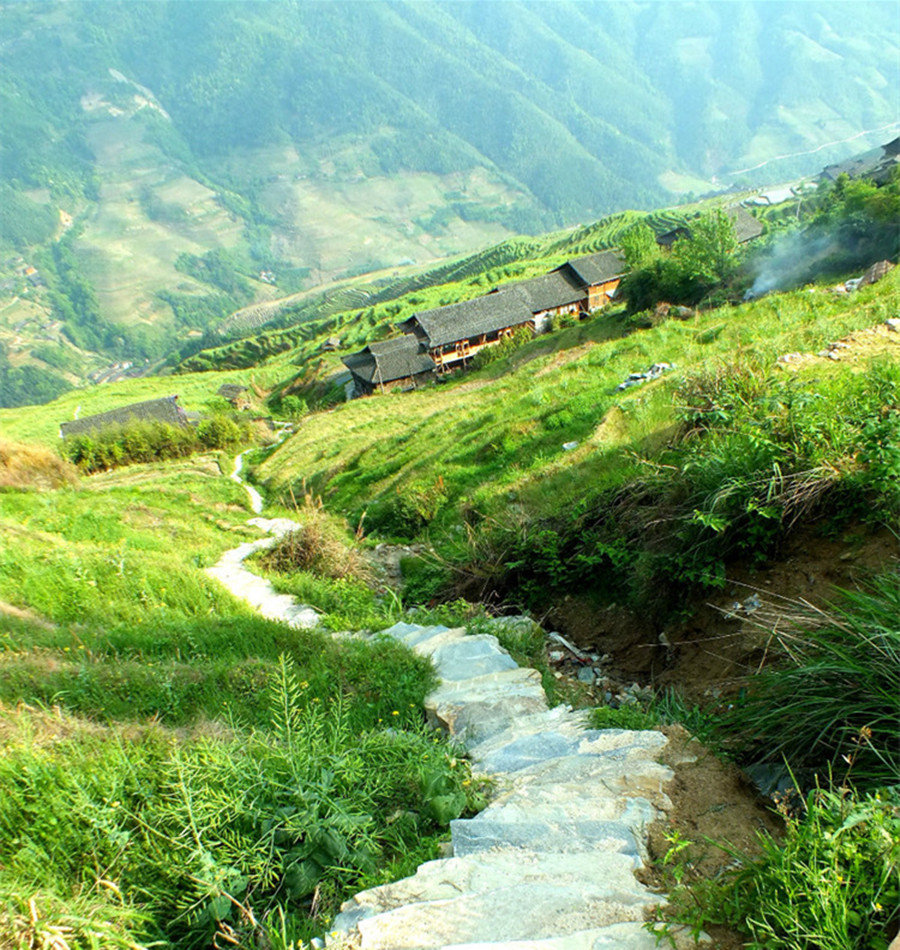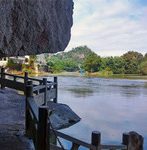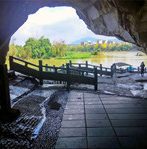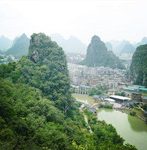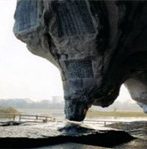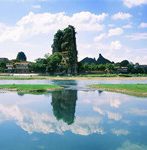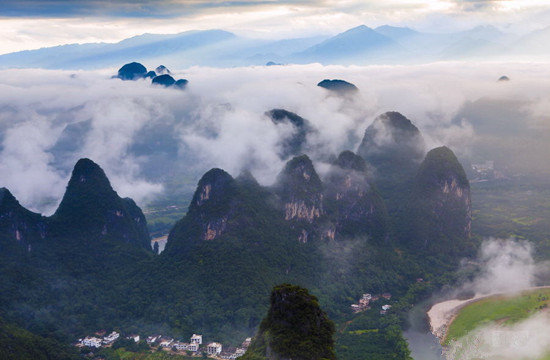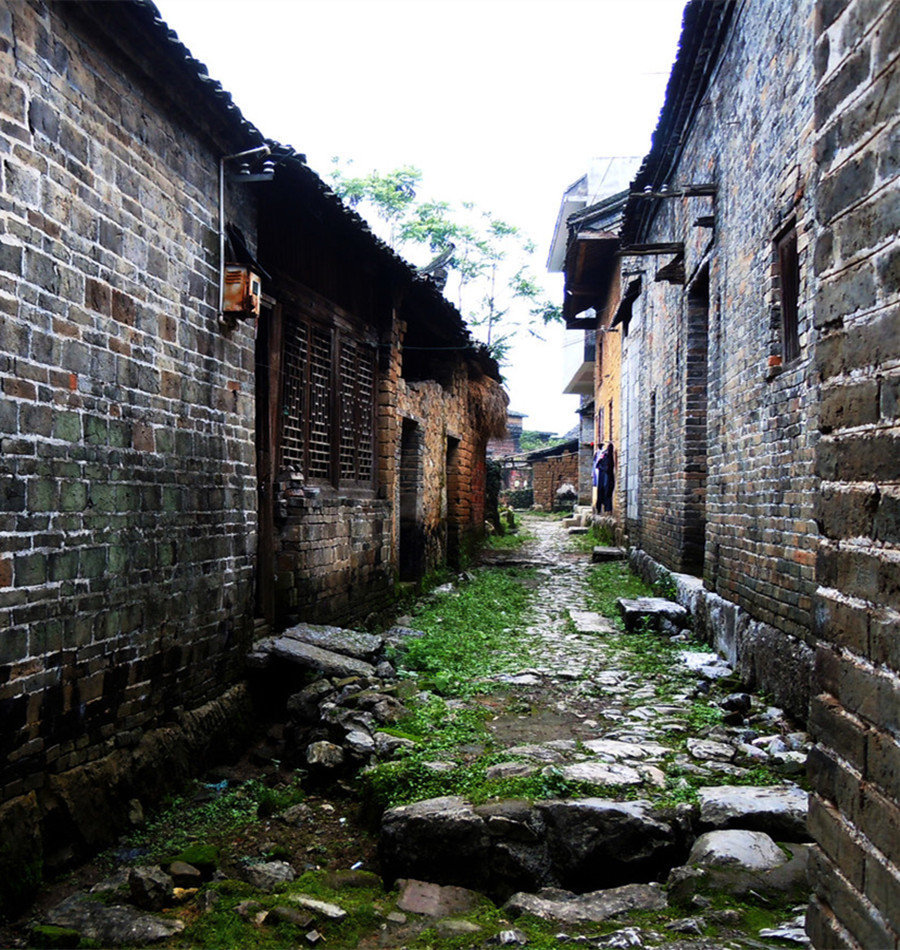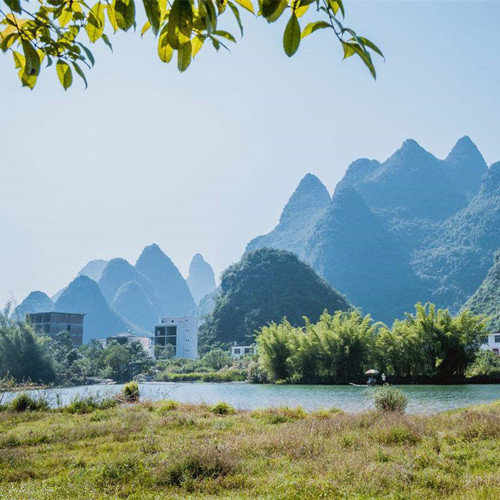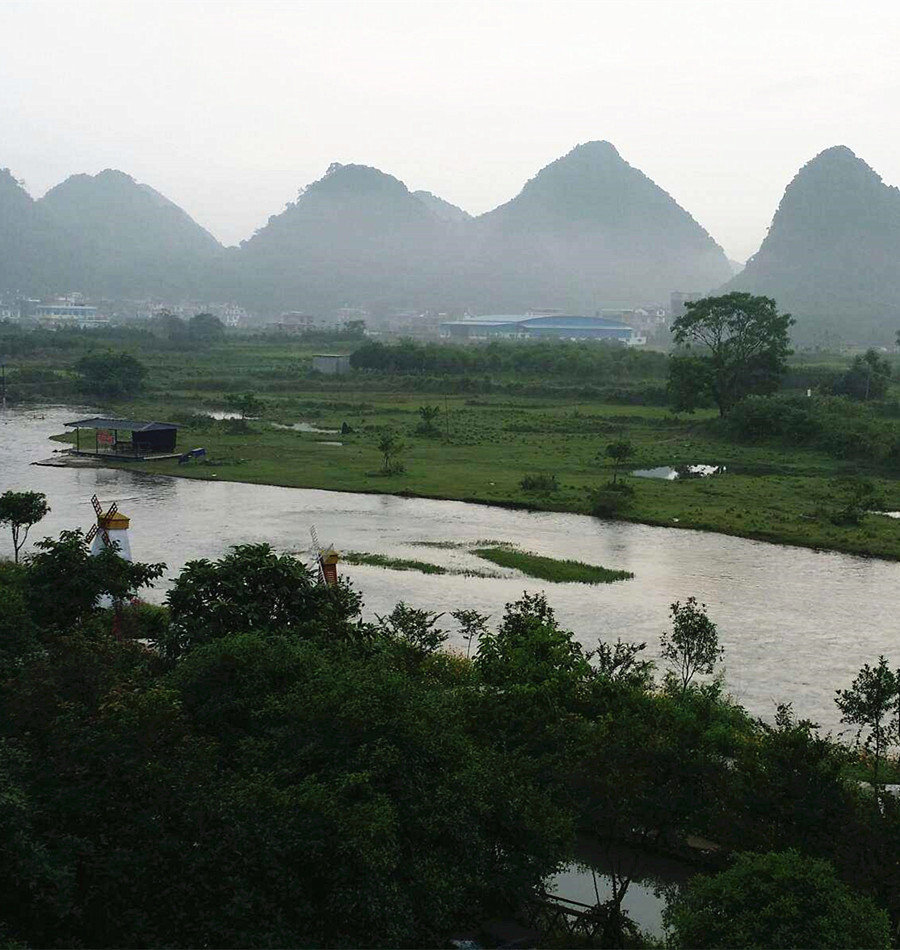The Fubo Hill (伏波山), another hill of Guilin’s scenic spots is located 2km from the Elephant Trunk Hill and just above the western bank of the Li River. It reaches the height of 213 meters (698.8 feet) and emerges 62 meters (203.4 feet) above the water. Half of it stands in the river and the other half of it on land. Since the galloping water is always blocked here and eddied, the hill is considered to have the power of subduing waves.
Moreover, it was on this hill that a temple in commemoration of General Fubo(伏波将军) was built in the Han Dynasty (202BC – 220AD), which gave rise to the name “Fubo Hill”.
Natural scenery of rocks and stalactites as well as artificial cloister and pavilions compose the fantastic and unique sight of the hill. At the foot of the hill lie the Pearl-Returning Cave(还珠洞), the Thousand-Buddha Cave(千佛岩) and the Sword-Testing Rock(试剑石), all of which have great appeal.
A gracious cloister and tearoom were built on the southern slope. Halfway to the hill is the Tingtao Pavilion (听涛阁, Pavilion of Listen-to-Waves). Stone stairs wind up towards the hilltop on the western slope of the hill. The Viewing Platform on the stairway is an ideal spot for taking in the panorama of Guilin.
Cloister
The Cloister(回廊) lies on the second terrace of the hill and combines the first and second terrace in an ingenious manner. In the well-tended garden by the cloister, trees and flowers grow prosperously. In front of the garden lies a pavilion which features a more than 300-year-old iron pot which weighs above 1,000 kilograms (2204.6 pounds). It is said that it can boil enough food for one thousand people. Therefore, it was given the name ‘Thousand-People Pot'(千人锅). When wandering alongside the cloister up to the third terrace, it is possible to rest in the tearoom featuring a court.
Pearl-Returning Cave
Entering the cave by boat on the green Fubo River(伏波江), visitors are given the opportunity to appreciate the charming rock and stalactites and the interior statues. Most of the statues were engraved in the later Tang Dynasty(618 – 907) by use of finished techniques, and subsequently became precious Buddhist artworks.
There are many different and interesting legends about the Pearl-Returning Cave. One of them tells that after the triumph of war, General Fubo retreated to the court, bringing herbs by boat. However, on the way, he was framed so as to have wringed pearls put in the boat. To clear the matter, he poured all the herbs into the Fubo River and returned the so-called ‘pearls’. Hence, the cave was named ‘Pearl-Returning Cave’. Another legend suggests that a peasant picked a great glittering pearl from the cave and angered the Dragon King. The peasant’s neighbors advised him to return the pearl at once, and so he did. Thus, the Dragon King stopped raising the devil waves, and humans’ lives became peaceful once more. To memorize the event, people entitled the cave ‘Pearl-Returning’.
Sword-Testing Rock
Inside the Pearl-Returning Cave, a breathtaking sight is hidden – the Sword-Testing Rock. It is a huge stone pillar hanging down with a large upper body and a smaller lower end. Seen from afar, it may look like a pillar plunging from the ceiling into the water surface. At a closer look, surprisingly, it actually hangs at a distance of 3.3 cm above the water and seems to be cut by sharp sword. If you are curious, you can get close to it and touch the rummy rift.
Legend has it that the General Fubo tested his sword on the rock, which gave it its present shape. When the general negotiated with the offenders in the Pearl-Returning Cave and reached a deadlock, he drew the sword and cut rocks off the huge pillar. The opponents were startled and immediately retreated.
‘How far do you want us to turn back?’ they asked.
‘Back to where my arrow falls.’ the general replied steadily.
‘Ok, we agree. Let us then see how far it will fly.’
General Fubo climbed up to the Fubo Hill and shot his arrow, which flew a distance of three hills till it landed on the field from which the offenders had originally come. The offenders retreated as agreed. From then on, the rock was known as ‘Sword-Testing’ in honor of the valiant general.
Geographically speaking, the rift belongs to the terrane of limestone. Streams flow along it and cause corrosion, and a rift was thus formed. Today, since there is no more corrosion, the pillar cannot produce any deposits, and the rock will retain its odd shape forever.
Thousand-Buddha Cave
Connecting with the Pearl-Returning Cave, the Thousand-Buddha Cave lies hidden in the hill. It has three levels with a total area of 133 square meters (159 square yards). Visitors climbing up along the winding stairs will find themselves attracted to the 239 statues of Buddha in 36 enshrines from the later Tang Dynasty situated on the upper level, along with mural paintings from the Song Dynasty (960-1279).
All of the artworks bear exquisite carvings. Among them, a curiosity can be found – a painting of Mi Fu(米芾), a renowned artist, done by the artist himself, because few of Mi Fu’s works are intact today.
